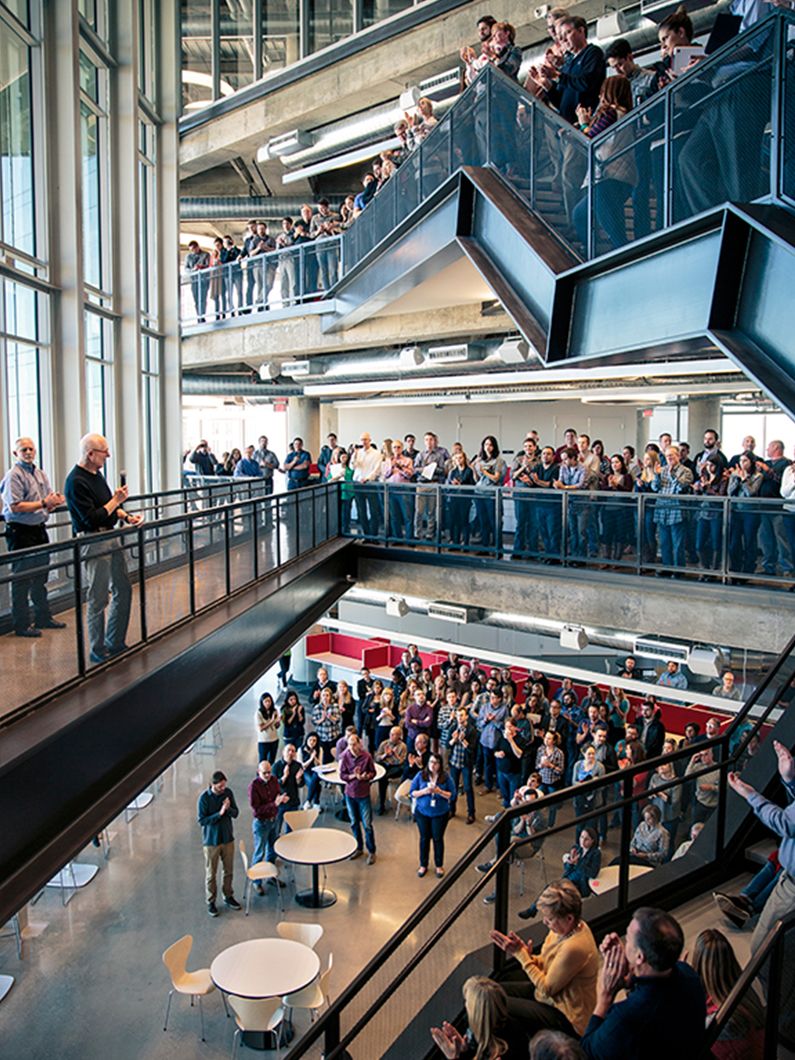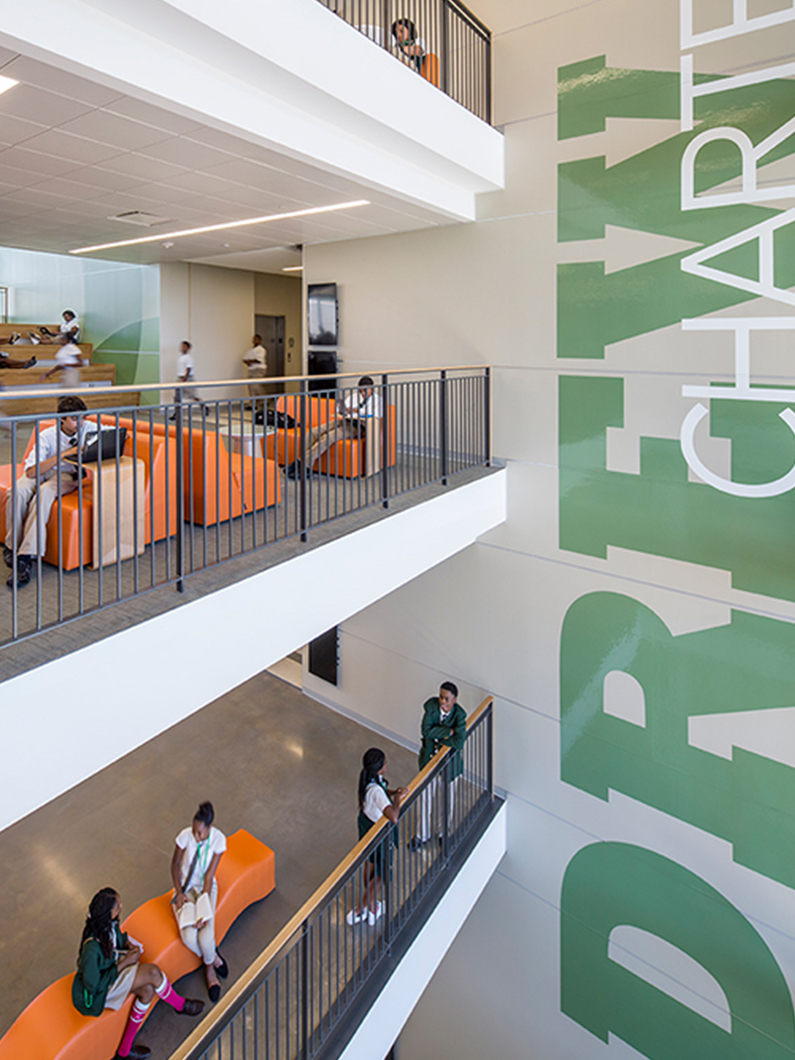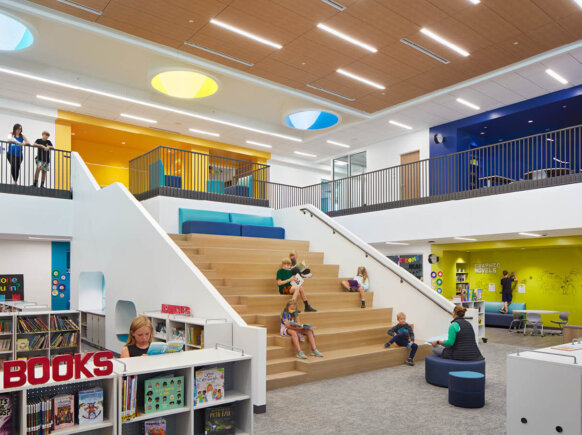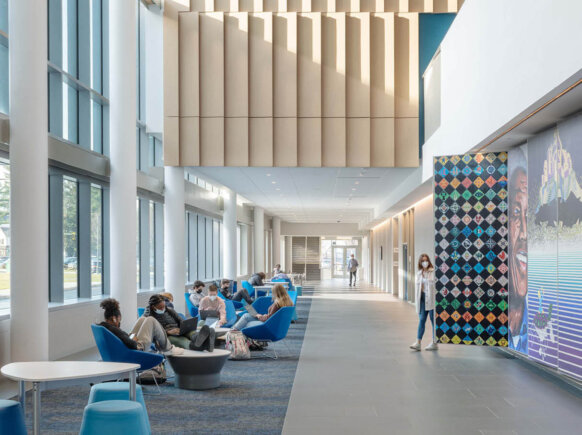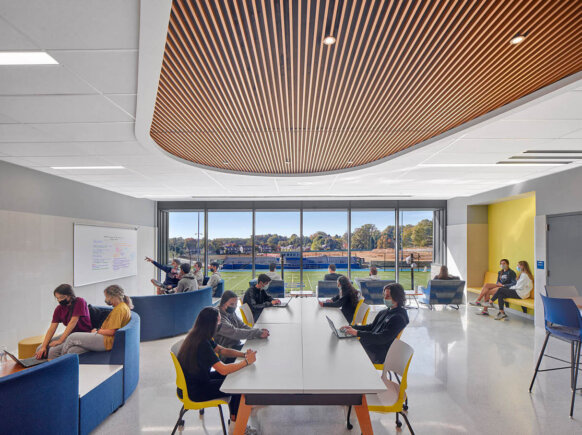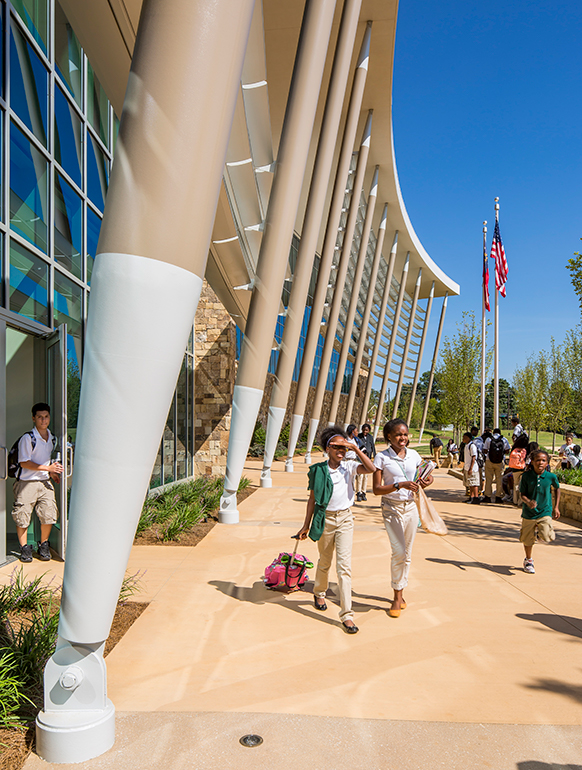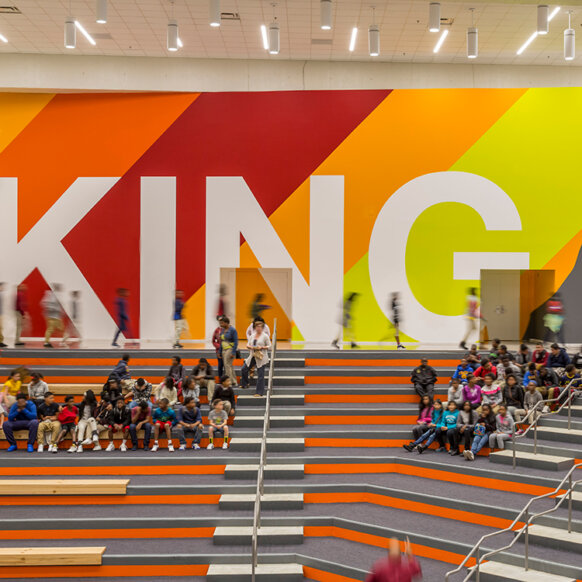Is it a workplace or a university? A webinar we recently attended prompted participants with images of flexible, collaborative spaces and asked them to answer this (seemingly) simple question. That the votes were often split 50/50 was no surprise given the increasing convergence between academia and workplace environments. We are also seeing these similarities extend to K12 schools – the first step in the lifelong continuum of learning.
While each sector can glean meaningful insights from the other, the common ground is learning: How can the environment promote it? Whereas educational spaces have adopted workplace’s growing focus on mobility and activity-based spaces, the workplace can learn a lot from schools about the value of play as well as a culture that supports learning so it’s celebrated, not stifled.
Today’s workplace is personal, flexible, and collaborative – a result of cultural changes, the fast pace of business, and technological advances. The world’s strongest innovators, including companies like Google and Facebook, have rewritten the rules not just for how business and social interactions take place, but also for how and where people work; there is a growing understanding that spaces where people meet and collaborate are just as important as the spaces where “work” occurs. The same is true of school environments. If designers can capture the potential to stimulate interdisciplinary discussion they can help schools discover the full potential of both their learning environments and their students. Similarly, workplaces can promote creativity and inventiveness by taking a page out of the educational space playbook. (Is it any surprise that the companies above often resemble childhood classrooms?)
At its heart, learning is a social process. Through research, we understand that children learn best when they are allowed to talk, listen, and collaborate with their peers, as these activities create a deeper understanding of concepts and help learners to identify with material. Authenticity of educational subjects is also a critical element of deeper learning, which is why it is so important for students to be exposed to real-world concepts and examples. This can easily be done by incorporating workplace design ideas into school environments. Creating schools that promote collaboration and serendipitous collisions between students, staff, and community members. What would it mean for the future of education if schools were created to foster a culture aligned with design thinking and interdisciplinary projects as an alternative to the traditional siloed subjects?
Let’s take a closer look at the trends impacting schools and workplaces alike.
Mobility
Technology allows learning to happen anywhere, providing flexible scheduling, tailored learning, and expanded curriculums. Students have the power to take learning into their own hands with access to supplementary materials while also moving at their own pace – making for a truly customized experience. In a wireless environment, every space in the school becomes a space for learning allowing for increased interdisciplinary collaboration.
In the workplace, laptops and tablets enable us to work anywhere. In response, we see a recalibration of personal workspace to shared spaces where employees can spontaneously team or, conversely, get away from the hum of the office for focus work. Beyond the workplace, mobility also addresses activities occurring elsewhere in an office building or company campus, or work done at a third place or at home – a scenario that may render the workplace as a cultural hub with emphasis on face-to-face interaction and socialization.
Wellness
Recent studies show that architectural design strategies can play a role in increasing physical activity among students and faculty as well as influencing additional healthy habits. By exposing staircases, providing vantage points to the outdoors, incorporating walking paths, and ergonomic furniture, designers can impact the health of the school’s inhabitants. From a curriculum standpoint, incorporating physical movement can even be a potent teaching tool.
Inviting, central staircases and the strategic placement of key areas like team rooms and amenities gets employees moving in the workplace. (As a bonus, these also promote chance encounters, which in turn build on-the-job learning via knowledge transfer.) A focus on work-life integration has also given rise to a host of amenities that help employees fit wellness more seamlessly into their busy days. Does the café transform into a yoga room after hours? Is there a gym on the premises or outdoor area for some fresh air? Companies who integrate wellness not only have healthier employees but also report ROI with both recruitment and overall productivity.
Choice
Great educational environments provide opportunities for everyone to learn in their own way. These spaces create ideal experiences, meaning, and identity for learners working either independently or in groups. In order to enhance these goals, the physical environment should be planned to support a variety of collaborative spaces. By creating fluid, flexible spaces that are both differentiated and integrated, one can design an environment that supports individual, 1-to-1, small group, and large group settings.
Employees have increasingly come to expect that the workplace support both the variety of daily tasks and their general work style (and to some extent, personality). With mobility and culture as the catalysts, we now have designated war rooms for brainstorming, cafés that double as event spaces, phone rooms for personal calls, and quiet areas for respite. More than just a real estate decision, an emphasis on variety and choice is a strategy that has been shown to increase employee engagement.
Play
Increasingly, business leaders and educators are realizing that human creativity – the ability to analyze, innovate and dream – is a distinctive quality that sets us apart from the technologies that continue to play a growing role in the world. Schools are now working to develop each student’s ability to imaginatively solve problems, realizing that creativity often materializes when students are given the opportunity to join forces on a project.
Slides and candy colors do not a creative office make. But the workplace can support play by offering space for less structured activities, along with a culture that supports them. Play – whether its socialization, a recreational break or creative brainstorming – is often work in disguise. Moreover, this approach helps combat employee stress, which drains productivity and hurts engagement.
Interested in learning more about how space supports learning from “cradle to career”? The Atlanta office of Perkins&Will is hosting a Continuum of Learning symposium next week, and in June, our K12 and Corporate Interiors Practice Leaders will speak about this topic at NeoCon.

